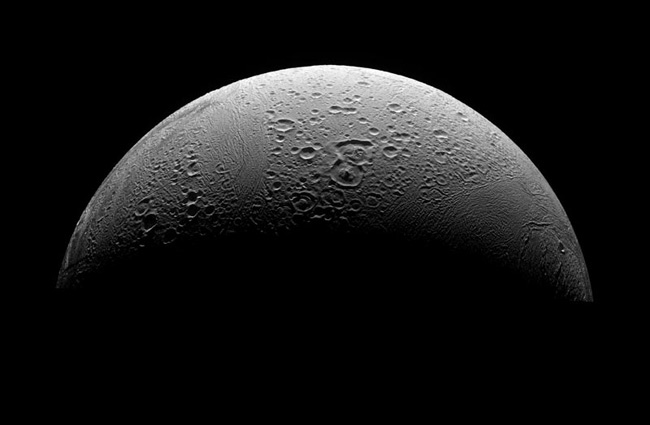Spacecraft Flies Through Saturn Moon's Plumes

LOS ANGELES (AP) - Theinternational Cassini spacecraft collected science data on mysterious geysersspewing from Saturn's moon Enceladus and recorded new images of its surfaceduring a close flyby, NASA's Jet Propulsion Laboratory said Thursday.
The passWednesday brought Cassini as close as 30 miles to the surface of the moon.It went through the icy geysers at 32,000 mph and an altitude of 120 miles, thelab said.
It's hoped that instrumentdata on density, size, composition and speed of plume particles will provideclues to whether there's a water ocean or organics inside the frozen moon. The geysersspew water vapor from fractures in the moon's south pole.
New pictures taken byCassini show the surface of the north polar region is much older than thesouthern hemisphere and is pitted with craters, the lab said.
Cassini imaging scientistCarolyn Porco said the images provide an important comparison for ?working outthe moon's obviously complex geological history.''
Porco, of the Space ScienceInstitute in Boulder, Colo., said the next big step will be getting detailedimages of the surface sources of the plumes during a low-altitude flyby thissummer.
The lab said that duringWednesday's flyby, one of Cassini's instruments, the Cosmic Dust Analyzer, hadan unexplained software problem that prevented it from collecting data duringclosest approach, but it did collect data before and after. Other instrumentsfunctioned properly, it said.
Breaking space news, the latest updates on rocket launches, skywatching events and more!
- VIDEO: Enceladus, Cold Faithful
- IMAGES: Cassini's Latest Discoveries
- Special Report: Cassini's Mission to Saturn

The Associated Press, also known as the AP, is a wire service that provides articles to a host of newspapers and websites. The news organization was founded in 1846, when the company delivered the news by pony express. The Associated Press journalists cover news from around the world and in all subject matters.
